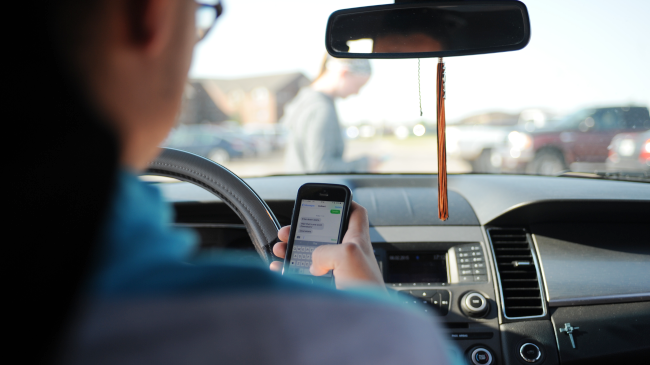As Distracted Driving Month 2019 comes to a close, I thought it would be appropriate to give you the National Motorists Association take on how to solve distracted driving.
The NMA believes that distracted driving, in all its forms, can best be addressed through efforts to educate the public on its dangers. Enforcement can be useful to a degree, but banning specific actions is unnecessary.
Driver Education Is the Answer
Ultimately, it has to be recognized that most people do not want to be involved in a traffic accident. If they are sufficiently and frequently forewarned that “inattentiveness” is the leading cause of all traffic accidents, the message may well take hold.
Reinvesting public resources, that are now invested in “speed kills” campaigns and related enforcement excesses, into educational and public relations efforts focused on inattentive driving would be a far more productive use of these funds.
What Kind Of Enforcement Should Be Used?
Every state in the country already has some form of law that addresses distracted driving. It shouldn’t matter if the driver is distracted by a conversation with another vehicle passenger, tuning the radio, eating a snack, or talking on a cell phone. Existing laws cover all those distractions and more.
If the level of distraction reaches a point that the driver is no longer safely and responsibly driving his or her car, they are guilty of distracted driving and any other violations that may result from their inattentiveness.
Cell Phone Bans Are Poor Public Policy
Laws that ban specific actions such as talking on a cell phone or texting are unnecessary and counterproductive because they’re already covered by existing distracted driving laws. Preemptive laws that make otherwise innocent harmless acts illegal are pervasive in the United States. Most of these pre-emptive laws are put in place for one of two reasons:
- The belief that by making the innocent and harmless act illegal it will eliminate the possibility that this act will lead to another, actually harmful act.
For example, the carrying of a concealed firearm in itself actually harms no one. However, most states and local jurisdictions prohibit the carrying of concealed firearms under the theory that preventing the possession eliminates the possibility that the firearm would be used to cause harm. - Ease of enforcement.
A blanket prohibition of cell phone use by vehicle drivers is far easier to enforce than are inattentive driving laws. This eliminates the need for exercising thoughtful discretion and reasoned judgment. The issue appears black and white. That the cell phone user was causing no harm and endangering no one does not have to enter the decision making process.
The NMA opposes this type of politically expedient enforcement practice. Innocent, harmless behavior, in and of itself, should not be illegal.
Here two resources that might be useful to you concerning distracted driving:
- Distracted Driving Information & Guidance
- The Ultimate Guide to Driving Safely & Avoiding Distractions
Here are some other writings from the NMA on the subject of driving while distracted:
- New Auto Tech Equals Distracted Driving
- When Will People Realize Distracted Driving Isn’t Worth the Cost?
- College Students & Distracted Driving
- Streaming Video Now a Type of Distracted Driving in Georgia
- Technology is the Answer to Stop Distracted Driving
- Distracted Driving to the Point of No Return
- What is the True Definition of Distracted Driving?
- Texting and Driving: What Parents Need to Know
- Effectiveness of Texting and Driving Bans Remains a Question
If you would like to join the National Motorists Association, please check out how today!








Shelia makes excellent points in this dabate. I favor a true free market solution: if talking or texting on a phone results in an accident then auto insurers should void all coverage for the responsible party. With this, the choice is obvious. People will react to financial incentives above almost all other rewards/punishments.